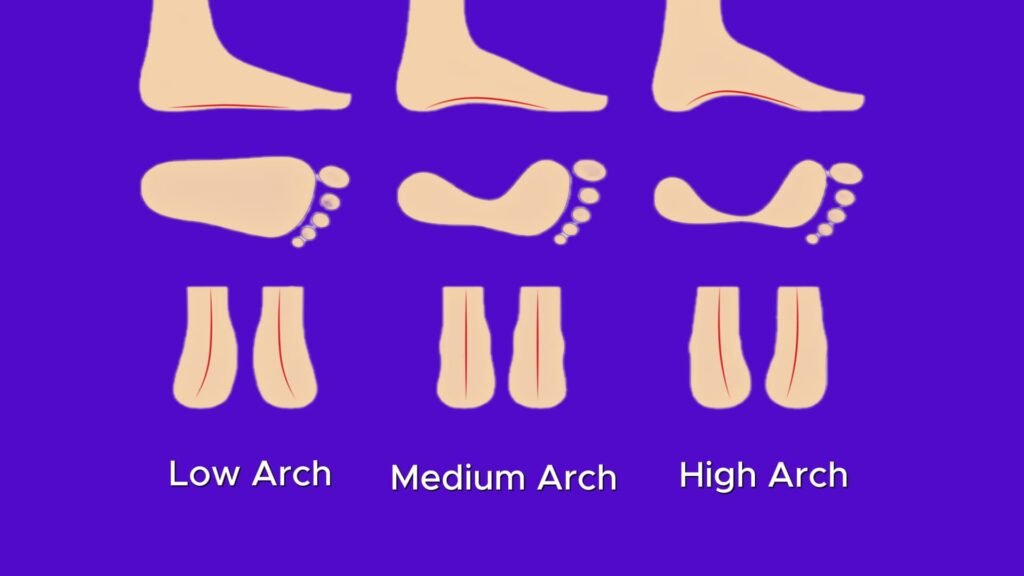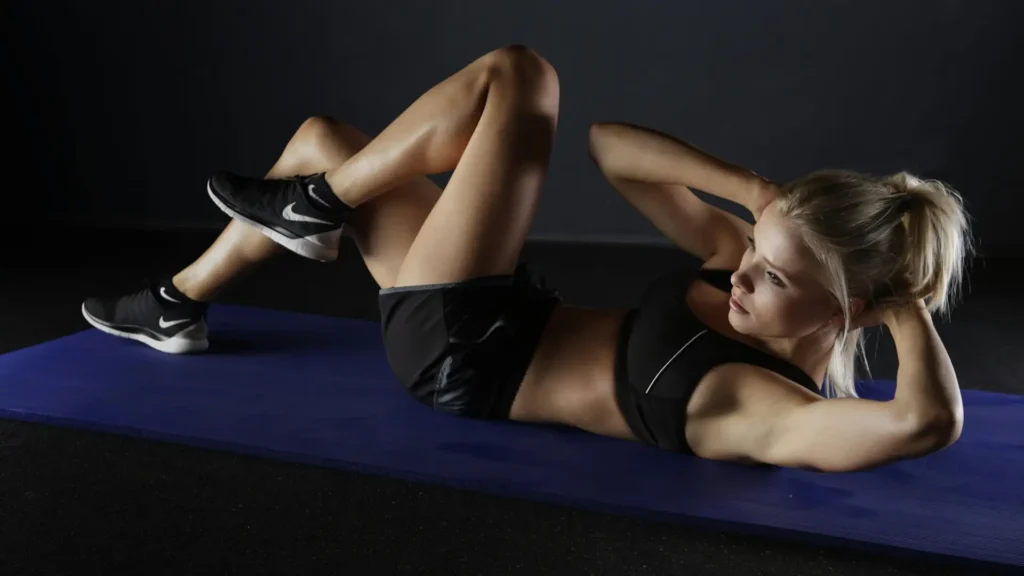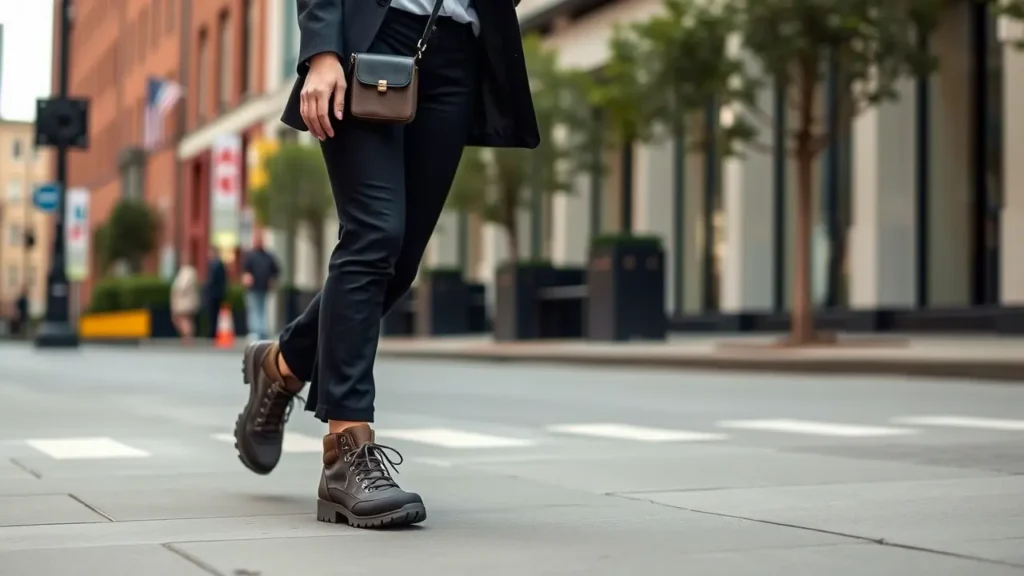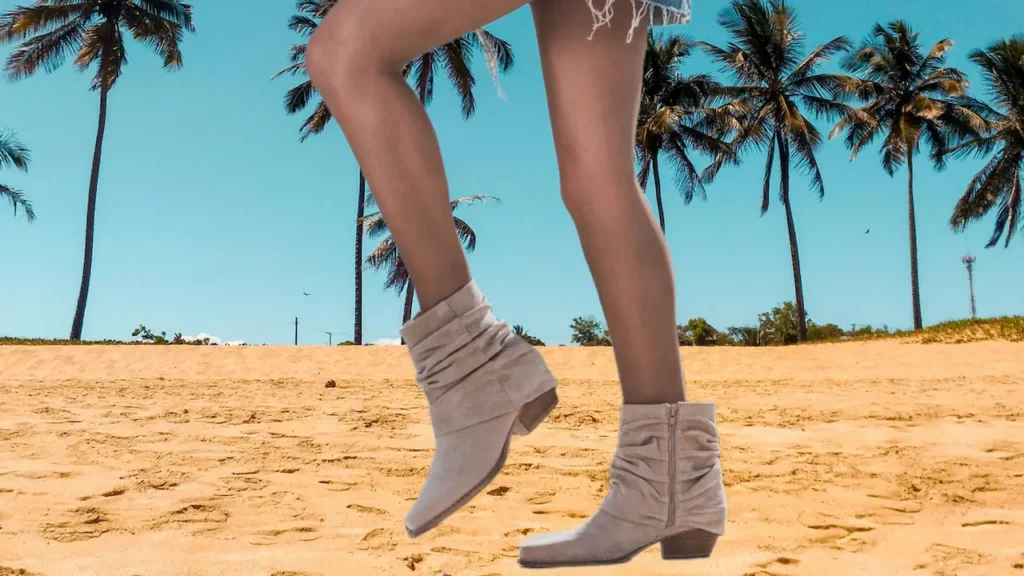One key factor in maintaining foot health and comfort is understanding your arch type and selecting shoes that provide the right support. Choosing the proper footwear can prevent discomfort, reduce strain, and improve your overall mobility. Here’s a guide to help you identify your arch type and pick the perfect shoes.
Understanding Arch Types in Depth
The human foot is designed to support the body’s weight. Central to this function is the arch—a curved structure that provides strength, flexibility, and shock absorption.
However, not all feet are created equal. The shape and height of your arch play a critical role in how your feet interact with the ground. Understanding your arch type is the foundation for selecting appropriate footwear and maintaining long-term foot health.
The Three Primary Arch Types
Flat Feet (Low Arches)
People with flat feet exhibit minimal to no visible curvature along the inner edge of their feet when standing. Instead, the entire sole makes contact with the ground. This creates what appears to be a flat footprint. This condition can be congenital (present at birth) or develop over time due to factors such as aging, injury, and obesity.
Flat feet are associated with overpronation, a biomechanical issue where the foot rolls excessively inward during the gait cycle. Overpronation places undue stress on the inner edge of the foot, ankles, knees, hips, and lower back. It can lead to plantar fasciitis, shin splints, bunions, and knee pain.
To counteract overpronation, individuals with flat feet benefit most from motion-control shoes. These types of footwear are designed to limit excessive inward rolling by incorporating features such as:
- Firm midsoles: Provide structural support to prevent collapsing of the arch.
- Arch reinforcements: Help maintain proper alignment of the foot.
- Heel counters: Stabilize the rearfoot and reduce unwanted motion.
- Structured cushioning: Balances comfort with rigidity to promote efficient weight distribution.
Neutral Arches
Neutral arches represent the ideal foot structure, characterized by a gentle curve along the inner edge of the foot. When viewed from the side, there’s a clear gap between the ball of the foot and the heel when standing. Neutral arches strike an optimal balance between flexibility and stability. This allows the foot to absorb impact effectively.
Feet with neutral arches typically exhibit a normal pronation pattern. This natural movement helps absorb shock and facilitates smooth transitions during walking and running. Because of this balanced behavior, people with neutral arches are generally less prone to injuries compared to those with flat and high arches.
Individuals with neutral arches should look for cushioned shoes that offer moderate support and excellent shock absorption. Key features to consider include:
- Moderate arch support: Maintains alignment without being overly restrictive.
- Balanced cushioning: Provides comfort for daily activities and athletic pursuits.
- Lightweight materials: Enhance breathability and ease of movement.
These shoes cater to the needs of neutral arches by offering just enough structure to maintain proper mechanics while still allowing the foot to move naturally.
High Arches
High-arched feet feature a pronounced curve along the inner edge, leaving only a narrow strip of the foot in contact with the ground. This creates a distinctive footprint with a hollow center. High arches are inherited but can also result from neurological conditions.
High arches tend to underpronate (supinate). This causes the foot to roll outward excessively during movement. Underpronation reduces the foot’s ability to absorb shock. This leads to increased pressure on the ball and heel of the foot. This can contribute to stress fractures, Achilles tendonitis, metatarsalgia, and calluses.
For those with high arches, extra cushioning and flexibility are paramount. Look for shoes with the following attributes:
- Soft midsoles: Absorb impact and reduce pressure on sensitive areas.
- Flexible soles: Allow the foot to adapt to uneven surfaces and improve shock absorption.
- Wide toe boxes: Accommodate the natural shape of the foot and prevent discomfort.
- Plush padding: Reduces strain on the ball and heel of the foot.
Steer clear of hard-soled shoes. They fail to provide the necessary cushioning and adaptability required by high-arched feet.
How to Determine Your Arch Type
Understanding your arch type begins with identifying its unique characteristics. Two straightforward methods can help you assess your arches:
The Wet Test
This DIY method involves creating a footprint to visualize your arch structure:
- Step 1: Fill a basin with water and submerge the bottom of one foot.
- Step 2: Step onto a piece of paper, cardboard, and any dry surface.
- Step 3: Examine the resulting imprint:
Full imprint with little to no curve: Indicates flat feet.
Moderate curve with a distinct gap near the arch: Suggests neutral arches.
Thin strip connecting the heel and forefoot with a large empty space in the middle: Points to high arches.
While the wet test provides a quick snapshot, it doesn’t account for dynamic movements. For a comprehensive evaluation, professional analysis is recommended.
Professional Gait Analysis
A gait analysis conducted by a podiatrist offers a detailed assessment of how your feet function during movement. Using advanced tools such as treadmills, pressure plates, and video cameras, professionals can identify subtle imbalances, pronation patterns, and biomechanical issues. This information allows them to recommend shoes tailored specifically to your needs.
Why Arch Type Matters
Your arch type influences not only the way your feet absorb shock but also how forces travel up through your legs and into your spine. Wearing improper footwear exacerbates existing issues and create new ones.
For example: flat-footed individuals wearing unsupportive shoes may experience worsening overpronation and related injuries. Those with neutral arches might encounter strain if their shoes lack adequate cushioning, even though their foot structure is considered ideal.
Individuals with high arches may face increased pressure on the foot. This leads to pain and injury.
By understanding your arch type, you can make informed decisions about footwear that will promote proper alignment, and reduce the risk of injury.
Customizing Footwear for Your Arch Type
Selecting shoes based on your arch type is a great starting point. Customization of your shoes further optimize comfort and performance. Here are some additional strategies:
For individuals whose arches require extra support beyond what standard shoes provide, orthotic inserts can be a game-changer. These inserts are designed to correct biomechanical imbalances, and provide targeted arch support.
People with flat feet benefit from semi-rigid orthotics that stabilize the arch, while those with high arches may prefer softer cushioned inserts to relieve pressure points.
If you engage in regular physical activity, investing in running shoes specifically designed for your arch type can significantly improve performance and reduce injury risk. Many athletic shoe brands categorize their products by arch type, making it easier to find the right fit.
Motion-control shoes are Ideal for flat feet. Neutral-cushioned shoes are Perfect for neutral arches. For high arches, opt for cushioned/supple Shoes.
Some shoes feature adjustable lacing systems that allow you to customize the fit around different parts of the foot. This can be particularly helpful for addressing issues like tightness across the top of the foot or ensuring the heel stays securely in place.
Foot width varies among individuals. Choosing shoes that accommodate your unique dimensions is essential.
Your choice of footwear should also align with your lifestyle and activities. For instance, If you spend long hours on your feet at work, prioritize shoes with superior arch support and cushioning to prevent fatigue and discomfort.
Different sports demand different types of shoes. Cross-training shoes, basketball sneakers, and trail-running shoes all have distinct features tailored to specific movements and terrains.
Even everyday casual shoes should take your arch type into account. Opt for shoes with built-in arch support or consider adding insoles for added comfort.
Tips for Choosing the Right Shoes Based on Arch Type
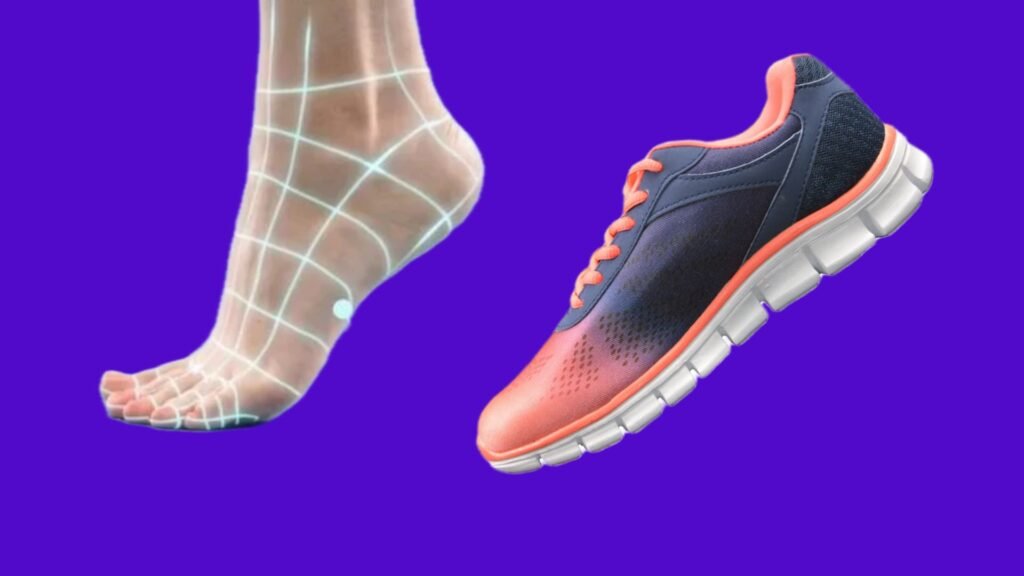
Once you’ve identified your arch type, it’s time to put that knowledge into action. Below are detailed guidelines tailored to each arch type, along with additional considerations to ensure you find the perfect pair of shoes for your needs.
For Flat Feet (Low Arches)
Flat feet require extra support to counteract overpronation and maintain proper alignment. Here’s what to look for:
Prioritize motion-control or stability shoes. These shoes are designed to limit excessive inward rolling of the foot. They provide structured support to stabilize the arch and prevent strain on the lower body.
Look for firm heel counters and reinforced arch support. A firm heel counter helps stabilize the rearfoot, while reinforced arch support ensures the midfoot doesn’t collapse during movement. Both features work together to promote better posture and reduce fatigue.
Avoid minimalist shoes. Shoes that are too flexible can exacerbate overpronation.
Consider orthotic inserts. If off-the-shelf shoes don’t provide enough support, consider adding custom orthotics or over-the-counter insoles designed for flat feet. These inserts enhance stability and alignment.
For Neutral Arches
Neutral arches benefit from balanced support and cushioning. Follow these tips to find the ideal shoes:
Select neutral-cushioned shoes with balanced support. Neutral-cushioned shoes strike the perfect balance between flexibility and stability. They offer moderate arch support without being overly rigid.
Ensure adequate arch support but avoid excessive stiffness. While some arch support is essential, overly stiff shoes can feel restrictive. Look for models with a gentle curve that mimics the natural shape of your foot.
Consider lightweight footwear for active lifestyles. If you’re engaged in athletic activities, lightweight shoes made from breathable materials can enhance performance and comfort. Many brands offer neutral-running shoes specifically engineered for speed and agility.
Test for shock absorption. Neutral arches distribute weight evenly. So shock absorption is still important. Press the midsole of the shoe to check its responsiveness and cushioning properties.
For High Arches
High arches need ample cushioning and flexibility to absorb impact and reduce pressure on sensitive areas. Here’s how to choose the right shoes:
Choose cushioned shoes with plenty of padding. High-arched feet tend to underpronate. Shoes with plush cushioning compensate for this by providing additional padding in the heel and forefoot.
Look for flexible soles that allow natural foot movement. Rigid soles restrict movement and worsen discomfort. Opt for shoes with flexible soles that bend easily.
Avoid hard shoes. Shoes with inflexible designs place undue stress on the ball and heel of the foot. Stick to softer materials.
Explore extra-wide toe boxes. High-arched feet have a narrower profile, but cramped toe boxes can cause irritation. Look for shoes with wide toe boxes to give your toes room to spread out comfortably.
Consider gel insoles for added comfort. Gel-based insoles provide targeted relief for high-arched feet by reducing pressure points and enhancing shock absorption.
Choosing the right shoes for your arch type is an investment in your comfort and health. By understanding your feet and matching them with the proper footwear, you can avoid pain through life. Take the time to assess your arches, explore your footwear, and prioritize fit.

